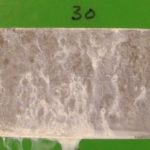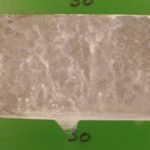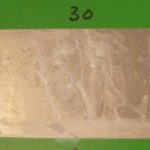The following article, by SIFCO ASC Technical Manager, Derek Vanek, was recently published in
Selective (brush) plating is an approved low hydrogen embrittlement (LHE) process used to apply zinc-nickel onto localized areas of high strength steel components for corrosion protection.
It is used to apply localized deposits onto previously unplated parts as well as for repair of wear and corrosion on previously plated zinc-nickel. It is approved for the repair of defective cadmium and IVD aluminum on localized areas, and has been around for more than 20 years.
Zinc-nickel is an environmentally- and operator-friendly alternative to cadmium plating. It combines the sacrificial coating properties of zinc with the strength, ductility, and corrosion resistance of nickel – creating a surface finish that, in some cases, is superior to cadmium.
Its true alloy composition is between 9 to 14% nickel with the remaining being zinc. Thanks to the aerospace industry’s push to use safer and more environmentally friendly alternatives to cadmium plating, there’s been a significant use of LHE zinc-nickel deposits over the last few years.
Approved by manufacturers across the globe
The selective plating process of zinc-nickel is approved for use by manufacturers including Boeing, Goodrich, Messier-Bugatti-Dowty, Bell, NASA, and Airbus.
Selective plating is a well-engineered method of electroplating that controls the thicknesses of deposits onto commonly used base materials for industrial components. As the name implies, the process is focused on a specific, ‘select’ area of a component.
The zinc-nickel plating process
The area that’s being plated along with the adjacent areas that are being masked are cleaned with a solvent. The surrounding areas are masked to protect them from the chemical process, and it helps isolate the area that needs plating. Typical masking materials include aluminum and vinyl tapes, masking paints, and special fixtures. In the case of zinc-nickel, the process is focused on the area to be plated. Masking is minimized to control the solution runoff from the part.
The selective plating process is highly portable and can be used in the shop or it can be taken into the hangar to work directly, in-situ, on the aircraft.
Minimal equipment is required for the zinc-nickel plating process. Equipment usually consists of:
- a rectifier,
- leads,
- a hand-held plating tool (anode),
- and a few accessories.
The actual volume of plating solution required at the worksite for a typical repair is less than 1 liter. Standard PPE (personal protective equipment) includes gloves, safety glasses, and local ventilation. The equipment below is representative of what is required for selective plating.
Zinc-nickel LHE – meeting exact specifications
In addition to numerous commercial specifications written, AMS 2451/9, Brush Plating Zinc-Nickel, Low Hydrogen Embrittlement was written specifically for selective electroplating of zinc-nickel.
The brush plated Type 2 deposit (using a trivalent chromium conversion coating), tested in accordance with ASTM B 117, will withstand 1000 hours of exposure to salt spray corrosion with no evidence of base metal corrosion; as well as passing hydrogen embrittlement testing with notched tensile samples being subjected to a 200 hour sustained load test at 75% of the notched ultimate tensile strength. This conforms with ASTM F519 and all applicable Federal, Military, AMS, ASTM requirements.
Selective plating of zinc-nickel as an LHE repair application is a safe, simple and much more widely used process today than has been the case since its development over 20 years ago. Certification for the use of this process is available through approved vendors. Training classes are typically three days. Operator recertification is typically required annually.
For more about SIFCO ASC and our zinc-nickel brush plating services, please contact us here.

 Chinese (Simplified)
Chinese (Simplified)  English (UK)
English (UK)  French
French  German
German  Spanish
Spanish  Swedish
Swedish 


